John Hurrell – 6 January, 2011
It is as if they had really wanted to pick works they just simply liked, but felt compelled to overlay a social theme at the last minute and ran out of argument.
Auckland
Local Revolutionaries: Art and Change 1965 - 1986
Curated by Mary Kisler and Ron Brownson
3 July 2010 - 30 May 2011
A modest exhibition in two rooms downstairs at the New Gallery, Local Revolutionaries presents a mixed assortment of art types, including a lot of colourful painting. It covers two decades - explaining how new technologies with paint and photography (for example) gave artists more freedom to express opinions on social issues - but tends to emphasise the eighties. It includes none of the truly experimental work of the seventies : the ‘post-object’ work discussed in for example Curnow and Allen’s 1976 New Art publication or in the 1998 survey Action Replay. Later work by artists like Alexis Hunter or Warren Viscoe is included, not their tougher early projects.
Perhaps my expectation here is unrealistic, it being after all a small AAG collection show, but I find the title of Local Revolutionaries stupidly sycophantic to artists - these ones especially, and slightly pompous. Be that as it may, much of the work displayed is compelling - sensual and thoughtful with discreet empathy for the salient issues of the day - albeit somewhat tame. Most of it is not politically radical or confrontational.
One work, which in its early 1972 version did cause public outrage, is Christine Hellyar’s Country Clothesline. When shown in Taranaki as an acquisition by the Govett-Brewster Art Gallery, this line of stiffened, latex soaked underwear and outer garments generated a lot of heated debate in the local paper. Auckland Art Gallery’s updated version, City Clothesline is black and sprinkled with talc, and looks more dramatic still - without the muddy earth colours of the original. It is seemingly charred and burnt and as a feminist ‘flag’ raises issues about domestic labour and gender. It is also perversely beautiful, even fetishistically erotic (as scungy black lingerie); a wickedly provocative side of Hellyar one rarely sees.
Ian Scott’s Sky Dash is the other way round, a slightly voyeuristic yet oddly innocent painting that exuberantly predicts New Zealand women’s rise in status and earning power. The two young women look confidently out to the world, optimistically anticipating fulfilment in career and love.
Some of the other paintings convey a sense of different types of drug experience in contradistinction to ‘ordinary’ bourgeois reality. Pat Hanly’s Everything is Beautiful has a lysergic Huxleyesque pantheism, a blissful merging of different molecular realities, while Bill Hammond’s The Young Designers is more abrasive, agitated and twitchy, suggesting an amphetamine-soaked nightmare of snarling violence generated by unrestrainable landscape and architecture.
There is also stinging satire. Warren Viscoe’s D.S.I.R Man is a sculpture that lampoons government bureaucracy and officious arrogance. His striding pin-headed figure is as much playful exploration of eccentrically juxtaposed form as acerbic caricature.
Many other items, like those of Neil Dawson, Philip Trusttum, Gavin Chilcott and Gretchen Albrecht, though excellent examples of their type, don’t fit into the theme at all and make the curators appear to be quite muddled. It is as if they had really wanted to pick works they just simply liked, but felt compelled to overlay a social theme at the last minute and ran out of argument. For a long show that runs for almost a year, the presentation and curatorial argument here should have been more thoroughly thought through.
John Hurrell
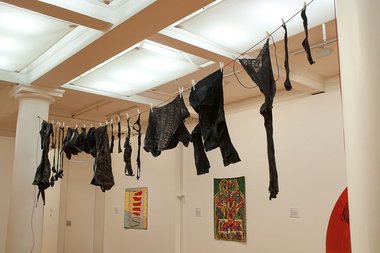

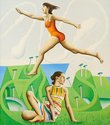
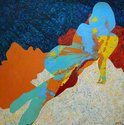
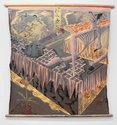


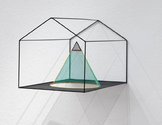
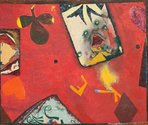
 Advertising in this column
Advertising in this column Two Rooms presents a program of residencies and projects
Two Rooms presents a program of residencies and projects



This Discussion has 0 comments.
Comment
Participate
Register to Participate.
Sign in
Sign in to an existing account.